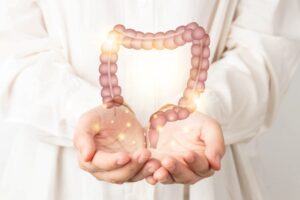What Is a Migraine and Why Does It Hurt So Much?

A migraine isn’t just a bad headache — it’s a neurological condition that causes intense, throbbing pain, often on one side of the head. Many people also experience nausea, sensitivity to light or sound, and sometimes visual disturbances known as an aura.
Migraines can last anywhere from a few hours to several days. While there’s no instant cure, there are ways to ease the pain quickly and help your body recover faster.
⚠️Note: This article provides general information only and should not replace professional medical advice.
1. Apply a Cold or Warm Compress
A cold compress helps constrict blood vessels and reduce inflammation — especially useful during the early stages of a migraine.
How to do it:
- Wrap an ice pack or a cool, damp cloth in a towel
- Apply it to your temples, forehead, or the back of your neck for 10 to 15 minutes
If your migraine is caused by muscle tension, a warm compress or heating pad on the neck and shoulders may provide better relief by relaxing tight muscles.
💡 Try both — some people find alternating between cold and warm works best.
2. Rest in a Dark, Quiet Room
Bright light and noise can intensify migraine pain. A calm environment helps your nervous system settle and reduces sensory overload.
Tips for quick relief:
- Lie down in a dark, cool room.
- Use an eye mask or blackout curtains.
- Block out noise with earplugs or gentle white noise.
Even 20–30 minutes of uninterrupted rest can significantly ease symptoms.
3. Stay Hydrated
Dehydration is a common migraine trigger — and it can also make an existing migraine worse.
How to hydrate effectively:
- Sip water slowly (especially if you feel nauseous).
- Add electrolytes if you’ve been sweating or vomiting.
- Avoid alcohol and caffeinated energy drinks, which can dehydrate you further.
If you often forget to drink water, set reminders or keep a reusable bottle nearby throughout the day.
4. Try Deep Breathing or Relaxation Techniques
Stress is one of the most frequent migraine triggers. Practising relaxation exercises can calm your nervous system and ease tension.
Quick breathing technique:
- Breathe in through your nose for 4 seconds,
- hold for 7 seconds,
- and exhale slowly through your mouth for 8 seconds.
Repeat for 3–4 rounds while focusing on relaxing your shoulders and jaw. You can also try gentle neck stretches or mindfulness meditation to further reduce tension.
5. Take Over-the-Counter Pain Relief Early
The earlier you take pain medication, the more effective it tends to be.
Common options:
- Ibuprofen (e.g., Nurofen®)
- Paracetamol (Panadol®)
- Aspirin
Take medication as soon as you feel the first signs of a migraine. Always follow the dosage instructions on the label and avoid taking more than recommended.
If you experience frequent migraines (more than 4 per month), consult a doctor — you may benefit from preventive medication or prescription-strength options.
6. Use Caffeine Strategically
A small amount of caffeine can help relieve migraine pain by constricting blood vessels and improving the effectiveness of painkillers.
However, too much caffeine or regular overuse can cause rebound headaches or withdrawal migraines.
Smart caffeine tips:
- Limit intake to 1 cup of coffee or tea during an episode.
- Drink water alongside to stay hydrated.
- Avoid high-caffeine energy drinks.
7. Avoid Trigger Foods and Strong Scents
Certain foods and smells can worsen migraine symptoms or trigger new attacks.
Common food triggers include:
- Processed meats (due to nitrates)
- Aged cheeses
- Alcohol, especially red wine
- Chocolate
- Artificial sweeteners (aspartame)
Strong perfumes, cigarette smoke, and cleaning chemicals can also intensify migraine pain — try to stay in a scent-free environment until symptoms subside.
8. Try Ginger (for nausea + pain)
Ginger has anti-inflammatory and antiemetic (anti-nausea) properties. Some research suggests that it can reduce migraine pain and accompanying nausea within about 2 hours.
Usage ideas:
- Sip ginger tea or chew a small piece of candied or fresh ginger
- Use ginger supplements (if you have no contraindications)
- Add ginger to soups or smoothies (if you can tolerate it)
Always verify with a healthcare provider first if you’re on medications, to avoid interactions.
🩺 When to Seek Medical Help
You should contact a doctor if you experience:
- Sudden, severe headache (worst pain ever)
- Visual changes or confusion
- Weakness, numbness, or difficulty speaking
- Migraines lasting longer than 72 hours
If you need prompt advice or a prescription, you can consult a telehealth doctor online for assessment and treatment options without leaving home.
Key Takeaway
While there’s no one-size-fits-all cure, combining simple steps — cold compresses, rest, hydration, relaxation, and early medication — can provide fast relief from migraine pain.
Regular triggers tracking and lifestyle adjustments can also reduce how often migraines strike.
If you frequently experience migraines and headache, talk to an online doctor to discuss personalised treatment or preventive options.



